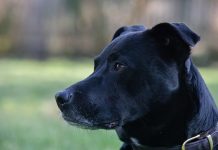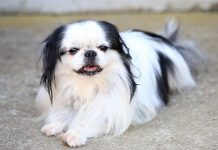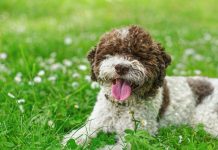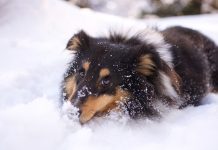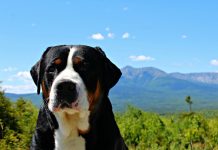History and Origins of the Bloodhound Breed

The Bloodhound is a majestic and ancient breed with a rich history dating back centuries. Here are key highlights of the history and origins of the Bloodhound:
- Ancient Origins:
- The Bloodhound’s roots can be traced back to ancient times, with early ancestors believed to have originated in ancient Egypt.
- These dogs were highly prized for their exceptional tracking abilities and were used by nobility and hunters.
- Development in Europe:
- The Bloodhound as we know it today was developed in medieval France and Belgium.
- Monks in European monasteries played a significant role in refining the breed’s traits and characteristics, especially its keen sense of smell and tracking abilities.
- Breeding for Scent Tracking:
- Bloodhounds were selectively bred over centuries to enhance their tracking skills, particularly for scenting and trailing game.
- Their exceptional ability to follow scent trails over long distances made them invaluable assets for hunters and law enforcement.
- Popularized in England:
- The Bloodhound gained popularity in England during the Middle Ages and was favored by English nobility for hunting deer, boar, and other game.
- The breed’s reputation as a relentless tracker and hunter continued to grow, and Bloodhounds became synonymous with tracking fugitives and criminals.
- Named “Bloodhound”:
- The name “Bloodhound” is believed to originate from the breed’s noble bloodlines and its association with aristocracy.
- Bloodhounds were highly esteemed for their exceptional tracking abilities, often leading to successful hunts and pursuits.
- Preservation and Conservation:
- Despite facing periods of decline, the Bloodhound breed was carefully preserved and revived by dedicated breed enthusiasts in the 19th century.
- Efforts to standardize the breed’s appearance and characteristics led to the establishment of breed standards and recognition by kennel clubs.
- Modern Use:
- Today, Bloodhounds are cherished companions and valued working dogs, known for their gentle demeanor, loyalty, and unparalleled scent-tracking capabilities.
- They are utilized in search and rescue operations, law enforcement, and as loving family pets around the world.
Physical Characteristics and Appearance of Bloodhounds
Bloodhounds are large, powerful, and distinctive dogs known for their unique appearance and impressive scenting abilities. Here are the key physical characteristics and appearance traits of Bloodhounds:
- Size and Build:
- Bloodhounds are large dogs with a strong and muscular build. Adult males typically weigh between 90-110 pounds (41-50 kg), while females weigh slightly less.
- They have a noble and dignified posture, with a deep chest, broad shoulders, and sturdy legs.
- Head and Face:
- Bloodhounds have a distinctive head shape with loose, wrinkled skin that forms folds around the face and neck.
- Their skull is broad and slightly rounded, with a pronounced occiput (back of the head).
- The muzzle is long and deep, allowing for excellent scenting capabilities.
- Ears:
- Bloodhounds are renowned for their long, pendulous ears that hang close to the head. The ears help funnel scents towards the nose during tracking.
- Eyes:
- Bloodhounds have large, soulful eyes set deeply into the skull. The eyes are typically brown or hazel in color, conveying a gentle and expressive expression.
- Coat and Color:
- Bloodhounds have a short and dense coat that is weather-resistant.
- Common coat colors include black and tan, liver and tan, or red. Some Bloodhounds may have white markings on the chest, feet, or tail tip.
- Tail:
- The tail of a Bloodhound is long, tapering, and carried high when the dog is active. It is not usually docked.
- Gait:
- Bloodhounds have a free and effortless gait, covering ground with a powerful stride. They are known for their stamina and endurance.
- Overall Appearance:
- Bloodhounds possess an imposing and majestic appearance combined with a gentle and affectionate nature.
- Their appearance reflects their heritage as determined hunters and relentless trackers, making them formidable working dogs and beloved companions.
Bloodhounds are a breed with a fascinating history and remarkable characteristics. Their combination of strength, intelligence, and loyalty has endeared them to dog lovers worldwide, both for their historical significance and their endearing personalities.
Bloodhound Temperament and Personality Traits
Bloodhounds are gentle giants known for their affectionate nature, remarkable tracking abilities, and calm demeanor. Here are key temperament and personality traits of Bloodhounds:
- Gentle and Affectionate:
- Bloodhounds are renowned for their gentle and affectionate temperament. They are typically loving and devoted companions, forming strong bonds with their families.
- Despite their large size, Bloodhounds are generally patient and tolerant, especially with children. They thrive on companionship and enjoy spending time with their human family members.
- Independent Thinkers:
- Bloodhounds are intelligent dogs with an independent streak. They may not always be eager to please like some breeds, but they are capable of learning and responding well to positive training methods.
- Their independence can make them appear stubborn at times, but with consistent and patient training, they can excel in various activities.
- Scenting and Tracking Instincts:
- Bloodhounds have an exceptional sense of smell and an innate talent for tracking scents over long distances.
- They have been used for centuries in search and rescue missions, law enforcement, and hunting due to their unparalleled scenting abilities.
- Relaxed Demeanor:
- Bloodhounds are typically laid-back and enjoy a calm and relaxed lifestyle. They are not high-energy dogs but require regular exercise to stay healthy and happy.
- They are content to lounge around the house but also enjoy outdoor activities and mental stimulation.
- Friendly Towards People:
- Bloodhounds are generally friendly and sociable dogs who enjoy meeting new people. They may be reserved or aloof with strangers initially but warm up quickly.
- Proper socialization from an early age helps Bloodhounds develop good manners and confidence around different people and situations.
- Good with Other Pets:
- Bloodhounds usually get along well with other dogs and pets, especially if they are raised together from a young age.
- Due to their strong scenting instincts, they may be curious about small animals and should be supervised around them.
- Watchful and Protective:
- While Bloodhounds are not aggressive dogs, they have a natural protective instinct towards their families.
- They make excellent watchdogs due to their deep bark and alert nature, although they are not guard dogs in the traditional sense.
Training and Socialization Needs for Bloodhounds
Training and socialization are essential for Bloodhounds to thrive as well-behaved and well-adjusted companions. Here are important considerations for training and socializing Bloodhounds:
- Early Socialization:
- Start socializing your Bloodhound puppy as early as possible to expose them to various people, pets, sights, and sounds.
- Proper socialization helps prevent shyness, fearfulness, or aggression towards unfamiliar situations.
- Positive Reinforcement Training:
- Use positive reinforcement techniques such as treats, praise, and play to motivate and reward your Bloodhound during training sessions.
- Bloodhounds respond best to patient and consistent training methods without harsh corrections.
- Basic Obedience:
- Teach your Bloodhound basic obedience commands such as sit, stay, come, and leash walking.
- Bloodhounds are intelligent but may be slow to respond at times due to their independent nature. Be patient and persistent in training.
- Scent Work:
- Capitalize on your Bloodhound’s natural scenting abilities by engaging in scent work activities such as tracking or nose work.
- Provide opportunities for mental stimulation and exercise through scent-based games and activities.
- Exercise Needs:
- Although Bloodhounds are not overly active dogs, they require regular exercise to stay healthy and prevent boredom.
- Daily walks, playtime, and mental enrichment activities are essential to keep your Bloodhound physically and mentally stimulated.
- Consistent Leadership:
- Establish yourself as a calm and confident leader for your Bloodhound. Consistency and clear boundaries help build trust and respect between you and your dog.
- Avoid harsh training methods or punishment, as Bloodhounds respond best to positive reinforcement and gentle guidance.
- Patience and Understanding:
- Bloodhounds mature slowly and may take longer to reach full obedience compared to other breeds.
- Approach training with patience, understanding, and a sense of humor, appreciating your Bloodhound’s unique personality and characteristics.
By investing time and effort into training and socialization, you can help your Bloodhound become a well-mannered, confident, and happy companion. With the right approach and consistent training, Bloodhounds can excel in various roles and activities, showcasing their exceptional scenting abilities and gentle temperament.
Health Considerations and Common Issues in Bloodhounds

Bloodhounds are generally healthy dogs, but like all breeds, they are prone to certain health conditions and concerns. It’s important for Bloodhound owners to be aware of these potential health issues and take proactive steps to ensure their dog’s well-being. Here are some common health considerations for Bloodhounds:
- Hip Dysplasia:
- Hip dysplasia is a common orthopedic condition in large breed dogs like Bloodhounds.
- It occurs when the hip joint develops abnormally, leading to joint instability and potential arthritis.
- Responsible breeders screen their breeding dogs for hip dysplasia to reduce the risk of passing on this condition to offspring.
- Bloat (Gastric Dilatation-Volvulus):
- Bloodhounds, like other deep-chested breeds, are susceptible to bloat, a life-threatening condition where the stomach fills with gas and twists.
- Bloat requires immediate veterinary attention and can be prevented by feeding multiple small meals throughout the day and avoiding strenuous exercise after eating.
- Entropion:
- Entropion is an eyelid abnormality where the eyelid rolls inward, causing irritation and potentially damaging the cornea.
- Bloodhounds with entropion may require surgical correction to prevent eye discomfort and maintain eye health.
- Ear Infections:
- Bloodhounds have long, droopy ears that can trap moisture and debris, making them prone to ear infections.
- Regular ear cleaning and inspection can help prevent ear infections in Bloodhounds.
- Skin Fold Infections:
- Bloodhounds have loose, wrinkled skin that can develop infections in the folds, especially if not kept clean and dry.
- Regular grooming and skin care are essential to prevent skin fold infections.
- Heart Conditions:
- Bloodhounds may be susceptible to certain heart conditions, such as dilated cardiomyopathy (DCM), a disease that affects the heart muscle.
- Regular veterinary check-ups and screenings can help detect heart conditions early.
- Hypothyroidism:
- Hypothyroidism is a hormonal disorder that can affect Bloodhounds, leading to symptoms such as weight gain, lethargy, and skin problems.
- Bloodhounds with hypothyroidism can be managed with medication and veterinary care.
- Obesity:
- Bloodhounds are prone to obesity, especially if they are not provided with proper exercise and a balanced diet.
- Monitor your Bloodhound’s weight and feed them a nutritious diet to prevent obesity-related health issues.
Living with a Bloodhound: Suitable Environments and Lifestyle Considerations
Bloodhounds are loving and affectionate dogs that thrive in a supportive and caring environment. Here are some lifestyle considerations for living with a Bloodhound:
- Space Requirements:
- Bloodhounds are large dogs that require adequate indoor and outdoor space to move around comfortably.
- They are well-suited to homes with fenced yards where they can explore and exercise safely.
- Exercise Needs:
- Despite their laid-back demeanor, Bloodhounds benefit from regular exercise to maintain good health and prevent obesity.
- Daily walks, playtime, and engaging activities that stimulate their sense of smell are ideal for Bloodhounds.
- Grooming:
- Bloodhounds have a short, dense coat that requires regular brushing to remove loose hair and dirt.
- Pay special attention to cleaning and drying their ears to prevent infections.
- Training and Socialization:
- Bloodhounds are intelligent but independent dogs that benefit from early training and socialization.
- Start training and socializing your Bloodhound puppy from a young age to ensure they grow into well-mannered adults.
- Temperature Sensitivity:
- Bloodhounds are sensitive to hot weather due to their thick coats and may overheat easily.
- Provide shade, access to cool water, and avoid strenuous exercise during hot weather.
- Veterinary Care:
- Schedule regular veterinary check-ups and vaccinations to monitor your Bloodhound’s health and address any medical concerns promptly.
- Stay informed about common health issues in Bloodhounds and work closely with your veterinarian to maintain their well-being.
- Companionship:
- Bloodhounds thrive on companionship and enjoy spending time with their families.
- They may experience separation anxiety if left alone for long periods, so provide plenty of interaction and attention.
By understanding the unique needs and characteristics of Bloodhounds, you can create a fulfilling and enriching life for your beloved dog. Providing a balanced diet, regular exercise, proper grooming, and veterinary care are essential for ensuring your Bloodhound’s health and happiness throughout their life.
Bloodhound Variations and Breeding Practices
Bloodhounds are a distinctive breed with relatively consistent physical characteristics, but variations can still occur based on breeding practices and regional differences. Here are some factors that may influence variations in Bloodhounds:
Variations in Bloodhound Breeding Practices:
- Purpose-Bred Bloodhounds:
- Bloodhounds can be bred for specific purposes, such as hunting, tracking, search and rescue, or as family companions.
- Dogs bred for hunting and tracking may exhibit slightly different physical and behavioral traits compared to Bloodhounds bred for show or as pets.
- Regional Differences:
- Bloodhound breeding practices and standards may vary regionally, leading to subtle differences in appearance and temperament.
- Bloodhounds bred in different countries or regions may have distinct characteristics based on local preferences and breeding goals.
- Size and Build:
- While Bloodhounds generally have a consistent size and build (large, muscular, with loose skin and droopy ears), variations in size can occur based on breeding practices.
- Some breeders may focus on breeding larger or more compact Bloodhounds depending on their intended use.
- Coat Color and Markings:
- Bloodhounds typically have a short, dense coat with distinct color combinations like black and tan, liver and tan, or red.
- Variations in coat color and markings can occur based on genetics and breeding practices, although certain color combinations are more common and preferred in show dogs.
- Temperament and Behavior:
- Bloodhounds are known for their gentle and affectionate temperament, but variations in behavior can occur based on breeding lines.
- Responsible breeders prioritize temperament and socialization when selecting breeding pairs to produce well-rounded and stable Bloodhound puppies.
- Health and Longevity:
- Breeding practices can influence the overall health and longevity of Bloodhounds.
- Reputable breeders conduct health screenings and genetic testing to reduce the risk of hereditary health issues and promote the overall well-being of the breed.
Breeding Practices for Bloodhounds:
- Health Testing:
- Responsible breeders prioritize the health and genetic soundness of Bloodhounds by conducting health screenings for hip dysplasia, heart conditions, and other common health concerns.
- Dogs with favorable health test results are selected for breeding to reduce the risk of passing on hereditary diseases to offspring.
- Conformation and Structure:
- Bloodhound breeders adhere to breed standards set by kennel clubs and breed organizations to ensure that dogs conform to the desired physical characteristics and appearance of the breed.
- Conformation shows and competitions provide a platform for breeders to showcase their dogs and evaluate breeding stock.
- Temperament and Working Ability:
- Breeders focus on producing Bloodhounds with sound temperament and working ability suitable for their intended purpose.
- Dogs with strong tracking instincts, trainability, and sociable personalities are preferred for breeding to preserve the breed’s working heritage.
- Ethical Breeding Practices:
- Ethical breeders prioritize the welfare of their dogs and adhere to responsible breeding practices, including proper socialization, early training, and appropriate care for breeding dogs and puppies.
- They provide lifetime support to puppy buyers and prioritize finding suitable homes for their puppies based on individual needs and preferences.
By understanding variations in Bloodhound breeding practices and the factors that influence physical characteristics and temperament, prospective owners can make informed decisions when choosing a Bloodhound puppy from a reputable breeder. Responsible breeding practices contribute to the overall health, well-being, and preservation of this beloved breed.
50 Best Names with Meanings for Bloodhounds
Choosing the perfect name for your Bloodhound can be a fun and meaningful experience. Here are 50 great names with meanings that might suit your noble and loyal companion:
- Tracker – Reflects the Bloodhound’s exceptional tracking abilities.
- Scout – A name for a vigilant and observant Bloodhound.
- Hazel – Inspired by the color of the Bloodhound’s soulful eyes.
- Atlas – Strong and powerful, like your Bloodhound.
- Cedar – A resilient and majestic tree, symbolizing strength.
- Echo – Represents the Bloodhound’s deep bark and keen hearing.
- Jasper – Meaning “treasurer,” perfect for a cherished Bloodhound.
- Harmony – Signifies the peaceful and gentle nature of Bloodhounds.
- Sable – Refers to the coat color of some Bloodhounds.
- Brutus – Strong and commanding, ideal for a male Bloodhound.
- Serena – Means “tranquil” or “calm,” fitting for a serene Bloodhound.
- Onyx – Symbolizes strength and determination.
- Odin – A powerful and revered name for a male Bloodhound.
- Amber – Warm and golden, like the eyes of a Bloodhound.
- Finn – Represents a brave and adventurous spirit.
- Raven – Mysterious and intelligent, just like Bloodhounds.
- Willow – Graceful and resilient, similar to a Bloodhound’s nature.
- Echo – Reflects the deep and resonant bark of Bloodhounds.
- Hunter – Perfect for a Bloodhound with a strong hunting instinct.
- Aspen – Symbolizes strength and endurance.
- Luna – Inspired by the moon, symbolizing tranquility.
- Rocco – Strong and determined, ideal for a male Bloodhound.
- Juniper – A resilient and adaptable name for a Bloodhound.
- Marley – A cheerful and friendly name for a Bloodhound.
- Quincy – Means “estate of the fifth son,” perfect for a beloved companion.
- Sabre – Strong and sharp, like a Bloodhound’s instincts.
- Zephyr – Represents a gentle and refreshing breeze.
- Iris – Inspired by the colorful and vibrant flower.
- Bruno – Means “brown” in Italian, suitable for a Bloodhound with brown markings.
- Sasha – Represents a defender of mankind, fitting for a protective Bloodhound.
- Yara – Means “water lady,” ideal for a Bloodhound with a love for water.
- Phoenix – Symbolizes rebirth and strength.
- Maximus – A powerful and noble name for a male Bloodhound.
- Serenity – Reflects the calm and composed nature of Bloodhounds.
- Copper – Inspired by the reddish coat color of some Bloodhounds.
- Archer – Perfect for a Bloodhound with a keen sense of aim.
- Athena – Represents wisdom and strength.
- Orion – Named after a constellation, symbolizing guidance and leadership.
- Willow – A graceful and serene name for a Bloodhound.
- Blaze – Reflects the fiery spirit and determination of Bloodhounds.
- Gypsy – Represents a free-spirited and adventurous nature.
- Indigo – A deep and mysterious name for a Bloodhound.
- Skye – Inspired by the open skies, symbolizing freedom.
- Titan – Represents strength and power.
- Nova – Refers to a star that suddenly increases in brightness, symbolizing brilliance.
- Astra – Means “star,” perfect for a shining Bloodhound.
- Gideon – Strong and powerful, ideal for a male Bloodhound.
- Phoebe – Represents radiance and brightness.
- Ranger – A courageous and vigilant name for a Bloodhound.
- Zeus – Named after the king of the gods, symbolizing authority and majesty.
Choose a name that resonates with your Bloodhound’s personality, appearance, and the unique bond you share. Whether you prefer a strong and commanding name or a gentle and serene one, these options are sure to inspire you in naming your beloved Bloodhound companion.

In conclusion, this comprehensive guide has provided a detailed overview of Bloodhound dogs, highlighting their unique breed characteristics and essential care considerations. Throughout our exploration, we’ve delved into the history, distinctive traits, and important aspects of owning a Bloodhound. Known for their exceptional sense of smell, gentle temperament, and loyalty, Bloodhounds make excellent companions for dedicated dog owners and families. They thrive in environments where they can use their tracking abilities and receive regular exercise. As you embark on your journey with a Bloodhound, may you appreciate their remarkable qualities and form a strong bond with this noble and fascinating breed, creating lasting companionship and joy together.






